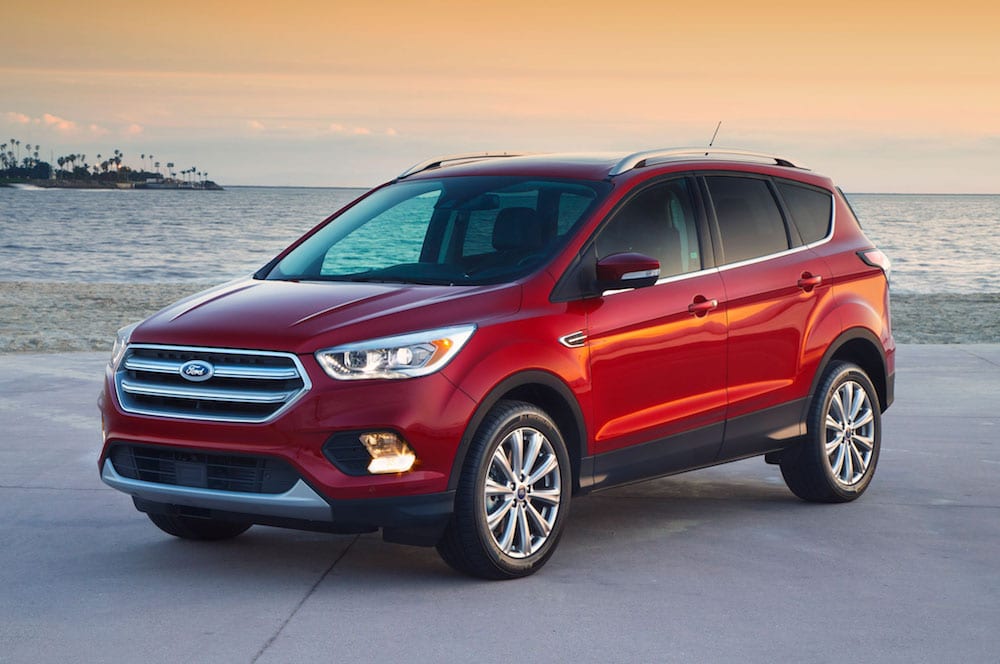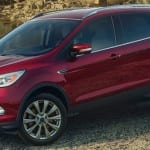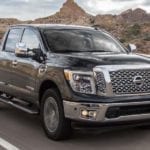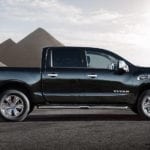The automotive industry is currently flooded with SUV options. This certainly isn’t a bad thing for customers, as this means they have a number of models to choose from. However, it can be a bit overwhelming choosing between the various offerings.
If you’ve started your research, you’ve surely debated the 2017 Nissan Rogue vs. the 2017 Ford Escape. Customers may be inclined to side with the reliable Ford offering, but that might not actually be the best route. Let’s see how these two SUVs stand side-by-side, and it might change your mindset…
2019 Model Update!:
It’s been two years since we last took a good look at how the Nissan Rogue and Ford Escape stack up against each other. A lot can change in two years, so while they may still have some of the same features and designs, I’m willing to bet there are some new options and things available that could definitely make a difference in how they compare. Of course, if you’re interested in the 2017 models, then the following information is still useful.
On the other hand, if you want to know about how the 2019 Nissan Rogue and 2019 Ford Escape compare to each other, then you’re in for a treat. We’ll stick with the same categories and format that we used in 2017—it worked then, so it’ll work now. Just look for the 2019 Update tags down below to see what these new SUVs have to offer. Maybe you’ll be surprised—and maybe we’ll have to crown a new winner this year…
Performance
2017 Nissan Rogue
There are a pair of capable and efficient engines available with the 2017 Nissan Rogue. The standard 2.5-liter DOHC 16-valve four-cylinder engine is plenty muscular, as owners can anticipate an impressive 170 horsepower and 175 pounds-feet of torque. Meanwhile, thanks to the array of fuel-saving technology, these drivers can also expect a 33 mile per gallon highway fuel efficiency when accompanied by the Xtronic CVT front-wheel drive system (32 mph when accompanied by the Xtronic CVT all-wheel drive system).
Alternatively, drivers can opt for the innovative 2.0-liter DOHC 16-valve four-cylinder engine. For a hybrid engine, the unit is plenty capable, delivering an impressive 176 horsepower and 141 pounds-feet of torque. Predictably, those hybrid capabilities also lead to improved fuel efficiency, as owners can save money via the 35 mile per gallon highway fuel efficiency.
2019 Update:
Two years later and the 2019 Nissan Rogue has, essentially, the same engines it did in 2017, though it’s worthwhile to point out something in the hybrid option. The standard engine is still a 2.5L DOHC 4-cylinder that offers up to 170 hp and 175 lb-ft of torque. It would be nice to have seen some innovation here in the last couple of years with a new engine, but it was good two years ago and it’s still pretty good.
The hybrid engine seems to be the same, but the information on its power and performance is clearer now than it was then. In the 2019 Nissan Rogue, the available 2.0L DOHC 4-cylinder engine with a lithium-ion battery offers up to 141 hp and 144 lb-ft of torque, with the hybrid system offering a net power of 176 hp. So that 176 hp is due to how the hybrid system works, rather than straight horsepower from the engine itself. 144 lb-ft of torque is decent, but it could struggle going uphill with a small trailer or camper towed behind it.
2017 Ford Escape
The Ford Escape provides their customers with three available engine options, but these offerings don’t come close to matching the capabilities of the engine offerings on the Nissan Rogue.
The 2.5-liter iVCT engine is the standard option, with the unit being capable of pumping out an underwhelming 168 horsepower and 170 pounds-feet of torque. The fuel economy is the engine’s one redeeming quality, as the system can deliver a 29 mile per gallon highway fuel efficiency. The 1.5-liter EcoBoost engine (with Auto Start-Stop technology) provides slight boosts to these specs, as the system can produce 179 horsepower and 177 pounds-feet of torque, while also delivering an impressive 30 mile per gallon highway fuel efficiency.
The 2.0-liter Twin-Scroll EcoBoost engine (with Auto Start-Stop technology) is for those seeking the utmost power, as this inclusion produces 245 horsepower and 275 pounds-feet of torque. Predictably, fuel efficiency suffers a bit, as drivers can only expect 27 miles per gallon on the highway when equipped with the four-wheel drive system.
2019 Update:
In the two years that have passed since we took a look at the 2019 Ford Escape, has Ford offered more innovative engines? No—the same three engines are available now that could be found in 2017, but it’s worth noting how much more power they offer drivers than those in the 2019 Nissan Rogue. While fuel economy is certainly the Rogue’s strength, especially with the hybrid engine, the Escape gives you options for much more horsepower and torque.
The starting engine in the Rogue can give you up to 170 hp and 175 lb-ft of torque, which is more than the Escape’s starting engine, since it offers up to 168hp and 170 lb-ft of torque. But look at those numbers—it’s such a slight difference you will probably never actually feel it. Step up to the first of two available engines in the Escape, however, and you get up to 179 hp and 177 lb-ft of torque. That’s more power and torque than you can get with the Rogue, and the fuel economy of the 1.5L EcoBoost is much closer to what the Rogue offers.
For optimal power, the 245 hp and 275 lb-ft of torque offered by the available 2.0L EcoBoost engine in the 2019 Ford Escape blows away anything the Nissan Rogue can do. If you have any thoughts of towing a small trailer or camper behind your SUV, then the Escape is a vastly better option. Yes it cannot keep up with the fuel economy of the Rogue, especially if you pick the Rogue’s available hybrid engine, but it is much more powerful.
Roominess and Technology
2017 Nissan Rogue
Since you’re going to be pursuing an SUV, you’ll surely expect an abundance of cargo room. Fortunately, the 2017 Nissan Rogue delivers in this regard. It starts with the spacious interior, which provides 70-cubic-feet of space behind the front row. Drivers can also capitalize on 39.3-cubic-feet behind the second row, as well as the eight-feet of length. As a result, drivers will truly be able to fit whatever cargo they need to squeeze in.
Nissan’s engineers also made it incredibly easy to configure the interior to fit any combination of cargo and passengers. The EZ Flex Seating System allows you to adapt your interior, as owners can manipulate the second and third rows. Owners can even hide these seats thanks to the Divide-N-Hide Cargo System.
Best of all, it’s incredibly easy to load any of your cargo, as the Motion Activated Liftgate provides easy access to your interior. Instead of having to finagle for your keys while your hands are full of groceries, drivers can simply wait for the trunk to open itself.
2019 Update:
So is the 2019 Nissan Rogue larger or smaller than it was just two years ago? Nope. You get exactly the same amount of cargo space in the current Rogue and just as much room for passengers as you did in 2017. And the motion-activated liftgate is still available and comes standard on most of the trim levels.
Within this spacious interior, Nissan has also packed a lot of impressive technology options and features. For example, at the highest trim level—the SL—you get a 7-inch touchscreen display with Navigation, Bluetooth support, dual-zone automatic temperature control, and an auto-dimming rearview mirror. The Rogue features Intelligent Cruise Control, a driver’s seat with memory settings, and the SL comes with a 9-speaker Bose premium sound system.
2017 Ford Escape
Ford’s hulking SUV also delivers an abundance of interior room… but not nearly as much as the rival Nissan Rogue. The vehicle normally sits up to five passengers, but the interior can be manipulated to unlock a maximum 68-cubic-feet of cargo space. The vehicle still provides a notable 34-cubic-feet behind the back row, but that’s still a downgrade on the Rogue’s specs.
Similar to the Nissan Rogue, Ford Escape owners can also take advantage of the 60/40 split rear seats to fit a combination of passengers and luggage. The 17-inch-wheel version of the SUV also includes adjustable floors, which will allow drivers to organize their luggage and cargo.
2019 Update:
Just like with the Nissan Rogue, the 2019 Ford Escape is essentially the same size as the model from two years ago. That means you get exactly the same amount of interior cargo space behind the first and second row. In both cases, the Escape provides a bit less room for stuff inside, though honestly, it’s such a small difference that you will probably never actually notice it. If you really want to pack your SUV to the brim, however, then you can fit more into the Rogue than the Escape.
There are some great interior tech features packed into the 2019 Ford Escape, however, especially if you can spring for the Titanium trim level. The Titanium includes a 10-speaker Sony audio system and an 8-inch touchscreen display with voice-activated Navigation. The hands-free foot-activated liftgate is only available on the Titanium, which also includes an auto-dimming rearview mirror and a heated steering wheel. The larger center console display in the Escape is great, but Nissan gives you more trim levels with a hands-free liftgate.
Safety
2017 Nissan Rogue
There are a number of useful features that won’t only make the 2017 Nissan Rogue incredibly easy to control, but also incredibly safe. For starters, the vehicle was specifically designed to withstand a collision, as inclusions like the Zone Body Construction should keep every occupant safe and secure. The six standard air bags will provide the necessary amount of cushion, while the Tire Pressure Monitoring System will assure that these important parts don’t suddenly fail.
Of course, it’s important to remember that Nissan drivers shouldn’t even find themselves in an accident in the first place. The various safety technologies will play a significant role in helping drivers avoid collisions. For instance, the Forward Emergency Braking will be especially useful when drivers require sudden stoppage power, and the included Pedestrian Detection technology will be especially useful when driving in the city. The Blind Spot Monitor will serve as an extra set of eyes and alert the driver of a vehicle that may have snuck up beside the Rogue, and the accompanying Lane Departure Warning will alert the driver when it’s safe to switch lanes.
2019 Update:
Nissan has definitely continued its tradition of safety features available on their vehicles, and two years have taken nothing away from the Rogue. The 2019 Nissan Rogue SL trim level includes an Intelligent around view system that gives you a better sense of the area around the vehicle, as well as rear sonar and an electronic parking brake.
What is really impressive with the Rogue is how many of the safety features are standard regardless of what trim level you look at. Things like a blind spot warning, rear cross traffic alert, and intelligent lane intervention come on the Rogue no matter what. Even automatic emergency braking with pedestrian detection comes standard.
2017 Ford Escape
There are a number of similar safety capabilities included on the 2017 Ford Escape, with many of the amenities revolving around prevention. Systems like the Adaptive Cruise Control and Forward Collision Warning with Brake Support will provide drivers with an extra set of eyes, altering the driver (and even altering the brakes) when a crash seems to be imminent.
The Enhanced Active Park Assist system is especially useful for those who have difficulties maneuvering into a tight parking spot. A number of accompanying technologies will assure that your SUV never suffers an accidental fender bender, preserving the quality of your recently-purchased vehicle.
2019 Update:
The 2019 Ford Escape certainly continues Ford’s dedication to safety when they design vehicles. My biggest complaint, however, is that too many of these features are available options rather than coming standard. Some things, like airbags and AdvanceTrac with roll stability control, are standard features.
The Titanium trim level includes all the safety features you could want, including enhanced active park assist with forward and side-sensing systems. On lower trim levels, however, features like adaptive cruise control, forward collision warning, and the blind spot information system are available options rather than being standard. Even though you can get a 2019 Ford Escape to be just as safe as the 2019 Nissan Rogue, more of these features are standard with the Rogue.
Who Comes Out on Top?
I don’t think we need to spend much time reviewing who the clear victor is in the competition between the 2017 Nissan Rogue vs. 2017 Ford Escape. The former option delivers better interior space, more capable engines, and versatile safety options. There’s really no better option in the entire segment!
2019 Update:
These days, the victor is not quite so easily decided. For the most part, it will depend a great deal on where your preferences lay. If you want a vehicle with better gas mileage—especially if you are interested in a hybrid engine—and more interior cargo space, then the Nissan Rogue is the clear winner. The 2019 Nissan Rogue also includes more safety features as standard inclusions rather than available options.
On the other hand, if you are more interested in power and performance, then the more powerful engines of the 2019 Ford Escape should definitely draw your eye. The Escape has less interior room for storage, but some better tech features including a larger available center console display. More of the Escape’s safety features are available options, rather than included, so keep that in mind.






